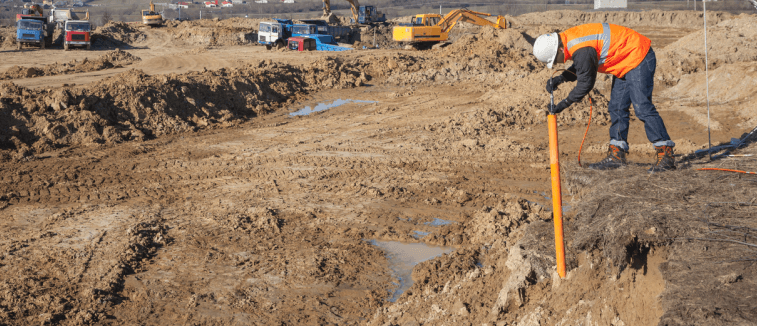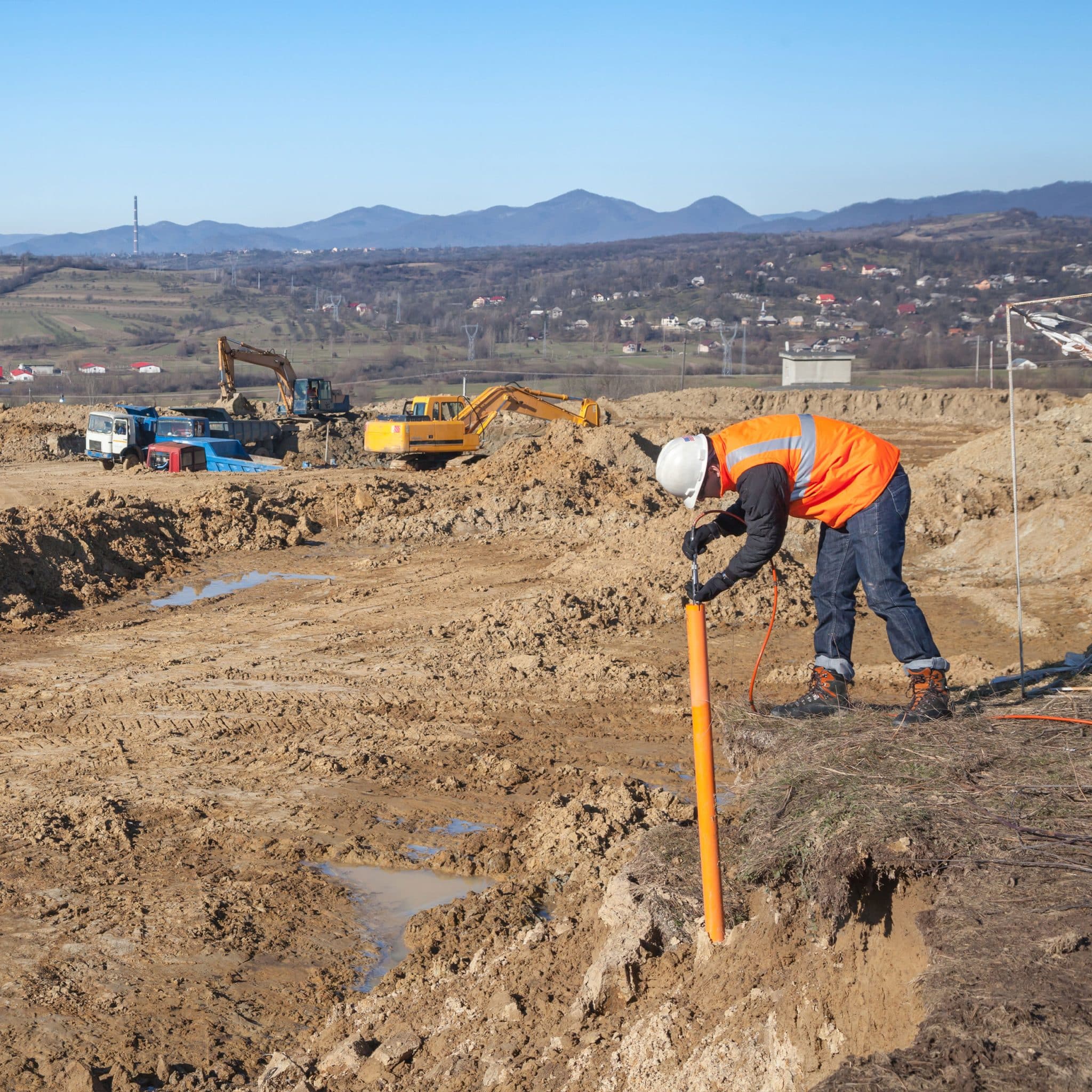The Role of an Engineer of Record in Ensuring Structural Integrity and Compliance
The Role of an Engineer of Record in Ensuring Structural Integrity and Compliance
Blog Article
The Interdisciplinary Approaches in the Geotechnical Sector: Linking the Space In Between Design, Geology, and Environmental Science for Ideal Job Outcomes
The combination of design, geology, and environmental science within the geotechnical industry is not simply advantageous; it is important for accomplishing ideal job end results. This interdisciplinary partnership cultivates a comprehensive understanding of facility website conditions, enabling innovative remedies to arise. By checking out crucial functions and successful study, we can reveal the dynamic interaction that drives job success. Nevertheless, challenges stay in effectively managing these multidisciplinary initiatives, questioning about future patterns and potential developments. What techniques might arise to promote this crucial cooperation and improve the efficiency of geotechnical methods?
Value of Interdisciplinary Cooperation
The value of interdisciplinary partnership in the geotechnical industry can not be overemphasized. Reliable geotechnical projects require the combination of diverse knowledge from different areas, including engineering, geology, and ecological science. This collaboration makes certain that all facets of a job are taken into consideration, leading to detailed services that resolve intricate obstacles.
Interdisciplinary partnership promotes innovation by enabling specialists to share understandings and approaches that may not appear when functioning in seclusion (tailings engineer). By leveraging the strengths of numerous self-controls, groups can determine possible dangers, enhance design procedures, and enhance the sustainability of geotechnical projects. Such partnership advertises an all natural understanding of site-specific conditions, which is vital for precise evaluation and decision-making.
The complexity of geotechnical tasks necessitates a worked with strategy to problem-solving. Ultimately, interdisciplinary collaboration is vital for advancing finest techniques and accomplishing quality in the geotechnical sector.
Trick Duties of Each Self-control
Collaboration among numerous disciplines is not simply useful; it is essential for the effective implementation of geotechnical projects. Each self-control-- design, geology, and environmental scientific research-- plays an unique yet interconnected role that contributes to project efficiency and sustainability.
Geotechnical designers are mainly responsible for making structures and ensuring architectural stability. They examine soil and rock buildings to analyze load-bearing capabilities, supplying essential data for risk-free building and construction practices. Their competence makes it possible for the solution of innovative services to complex difficulties.

Environmental researchers analyze the prospective impacts of construction on ecosystems and water sources. They perform environmental assessments and establish reduction approaches to lessen unfavorable results. By incorporating environmental considerations, they guarantee compliance with laws and promote sustainability throughout the task lifecycle.
Case Research Studies of Effective Combination
Effective combination of geotechnical techniques can be exemplified through numerous instance researches that highlight the effectiveness of synergy in attending to complicated engineering challenges. One notable example is the building and construction of the Hong Kong-- Zhuhai-- Macau Bridge, where a joint approach involving geotechnical engineering, geology, and ecological scientific research was vital. Designers and rock hounds operated in unison to examine the seabed problems and enhance the foundation layout, making sure security and reducing ecological impact.
An additional impactful situation is the renovation of incline stability in the San Francisco Bay Location, where an interdisciplinary group integrated geotechnical analysis with ecological evaluations. By integrating hydrological research studies and geological studies, the group efficiently why not try here recognized prospective landslide risks and implemented effective reduction actions, boosting safety and security and sustainability.
Additionally, the redevelopment of Brownfield sites frequently calls for a multidisciplinary strategy. In one case in Chicago, collaboration among geotechnical site web designers, environmental scientists, and urban planners resulted in the successful remediation of polluted dirt, permitting the safe makeover of the site into a neighborhood park. These study show that interdisciplinary collaboration not just addresses technological obstacles but additionally cultivates cutting-edge options that benefit both projects and areas.
Obstacles in Multidisciplinary Projects

Furthermore, collaborating routines and workflows amongst various groups can be problematic, especially when each self-control has one-of-a-kind project milestones and deliverables. This misalignment can cause delays and increased expenses. The difficulty of source allocation additionally impends huge; making sure that customized expertise is offered at crucial junctures needs careful preparation and insight.
Finally, governing conformity positions another substantial challenge. Each self-control might face various regulatory structures, and straightening these requirements to fulfill task purposes can be taxing and complex. Addressing these difficulties demands strong leadership and reliable interaction techniques to cultivate cooperation and make certain that multidisciplinary groups work cohesively in the direction of shared goals.
Future Trends in Geotechnical Practices
As the geotechnical industry evolves, arising patterns are reshaping techniques to resolve the challenges encountered in multidisciplinary jobs - consulting engineer. One substantial fad is the boosted combination of innovative technologies, such as fabricated intelligence visit our website and artificial intelligence, right into geotechnical evaluation and style. These innovations enhance predictive modeling and risk assessment, making it possible for engineers to make even more informed choices throughout the project lifecycle

Furthermore, the adoption of electronic twins and real-time surveillance systems is ending up being more common. These tools help with continuous assessment of dirt conditions and architectural efficiency, enabling prompt treatments when problems arise.
Final Thought
In conclusion, the assimilation of engineering, geology, and ecological scientific research is important for accomplishing optimal outcomes in the geotechnical sector. Effective instance researches highlight the benefits of this strategy, while recognizing the obstacles dealt with in multidisciplinary jobs.
The integration of engineering, geology, and environmental scientific research within the geotechnical market is not just useful; it is critical for accomplishing optimum task outcomes. Efficient geotechnical jobs need the assimilation of varied know-how from numerous areas, consisting of engineering, geology, and ecological scientific research.Browsing the complexities of multidisciplinary projects in the geotechnical industry provides numerous considerable obstacles.As the geotechnical industry progresses, emerging patterns are reshaping practices to attend to the challenges faced in multidisciplinary tasks. Geotechnical designers are progressively collaborating with ecological researchers to guarantee that jobs straighten with sustainability objectives and abide with regulative requirements.
Report this page